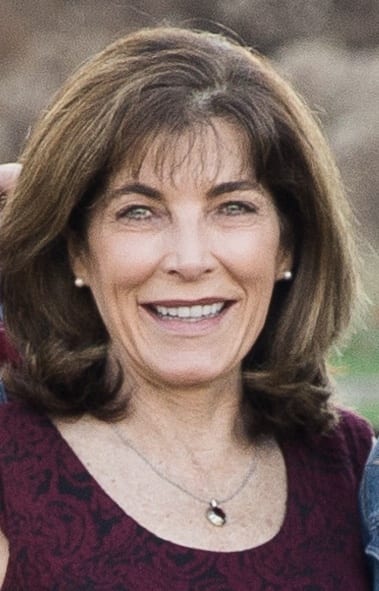 “How to Live Forever: A Guide to Writing the Final Chapter of Your Life Story” by Kimberly Best is a deceptively simple book about how to end your life well. Divided into three artfully written sections, it walks the reader through the important financial, legal and interpersonal issues that confront us as we prepare for our deaths. Best begins with practical matters: enumerating in great detail how and why each of us needs to organize our personal affairs so that survivors can access important information and documents after our deaths. This list is as exhaustive as it is enlightening — a wonderful roadmap for anyone who is trying to “get their affairs in order” at the end of their lives.
“How to Live Forever: A Guide to Writing the Final Chapter of Your Life Story” by Kimberly Best is a deceptively simple book about how to end your life well. Divided into three artfully written sections, it walks the reader through the important financial, legal and interpersonal issues that confront us as we prepare for our deaths. Best begins with practical matters: enumerating in great detail how and why each of us needs to organize our personal affairs so that survivors can access important information and documents after our deaths. This list is as exhaustive as it is enlightening — a wonderful roadmap for anyone who is trying to “get their affairs in order” at the end of their lives.
Best also covers legal matters — explaining why we need a will, an advance directive, a durable power of attorney, and, where appropriate, a POLST or an out-of-hospital DNR. In doing so, she explores the importance of identifying our preferences for what we do and do not want from medical professionals as our lives are coming to an end. A former ER and ICU nurse, she illustrates her points with poignant stories of patients whose lives ended peacefully and those who — due to a lack of clearly identified goals of care — died unnecessarily difficult, protracted deaths.
Best’s writing is artful yet direct. She writes about why we should participate in planning our own funerals and explains through examples how doing so can quite literally be our parting gift to those left behind. She also reminds us that part of funeral planning is planning for what happens to our bodies after we die. Embalming or no embalming? A visitation or not? Burial or cremation? These are only a few of the important issues she invites readers to explore and share with their loved ones before they die.
The next section of Best’s book is about stories — the stories that all of us have but so few of us share. This is definitely my favorite part of the book because it so beautifully illustrates the enormous power of sharing who we are with the people we love. Best writes:
Stories live forever, so stories make us immortal. Stories give sense, purpose and narrative to our lives. At the same time, if our readers are open to the lessons that our pasts hold, stories allow others to learn, grow and be changed by our experiences … Our stories are our legacies.
If we fail to tell our stories before we die, everything we were and everything we learned disappears with us, Best warns. So, no matter how difficult the telling is — no matter how unflattering some parts of that story may be — it’s important to tell it anyway, she writes. She then gives us a list of 30 questions — some mundane, some profound — to help us begin the task of telling the full and honest story of our lives.

Kimberly Best, R.N., M.A.. is a former ICU and ER nurse
and professional mediator who specializes in family
and elder care mediation.
Credit: parnassusbooks.net
The third section of “How to Live Forever” is the most ambitious and, to me, the least satisfying. A professional mediator who holds a masters degree in conflict management, Best, in this section, tackles the subject of relationships — particularly fractured relationships — and makes a valiant effort at coaching the reader on the steps necessary to mend fences and barter forgiveness with those we love. And I don’t use the word “valiant” lightly. These chapters are wonderfully written and full of smart, even sage advice, and they contain more than a few gems of wisdom that certainly resonated with me. Best writes of the mechanics of conflict — how humans are hard-wired to react to challenges as a potential threat, and how this biological predisposition sets us up to be adversarial — even with those we love. She writes fervently about the power of apology, explaining that we cannot be at peace with ourselves unless we forgive those who have hurt us the most. She even breaks down these intricate concepts into easily digestible questions that the reader can explore on their own.
Still, as I read Best’s relationship advice, I found myself shaking my head. “This is wonderful stuff,” I thought to myself, “but I don’t know a single person who could successfully navigate these monumental attitudinal and behavioral changes on their own.” Best is a professional mediator; she resolves conflicts for a living, and I’m sure she does so beautifully. But I think her skill in that role may have blinded her to how incredibly difficult following her advice would be, especially for people for whom dysfunctional relationships are the norm.
But perhaps Best does understand the difficulties and decided to do her best to enlighten her readers anyway. She does write about mediation, and how a professional mediator can often help feuding family members find middle ground. And, even if she misses the mark occasionally, her sincere desire to help her readers mend fences and resolve conflicts is abundantly clear. In her final paragraph, she writes:
I also believe that we leave our legacy every moment, every interaction, no matter what we do and no matter where we are from. Every interaction with another person is an opportunity to leave a legacy of kindness or unkindness. Who we are in any given moment lives on.
And that, in the end, is the overarching message of “How to Live Forever” — that we will all be remembered for how we lived our lives. We can choose to leave a legacy of kindness, or we can hold on to our resentments and disappointments and take them with us to the grave. We really do have the power to choose. And Best’s book gives us some very useful tools to choose the right path.

 “How to Live Forever” by Kimberly Best
“How to Live Forever” by Kimberly Best


 Our Annual Seven Holiday Gifts for Someone Who Is Grieving, 2024 Edition
Our Annual Seven Holiday Gifts for Someone Who Is Grieving, 2024 Edition

 “Hands Up to the Sky” by Michael Franti & Spearhead
“Hands Up to the Sky” by Michael Franti & Spearhead














